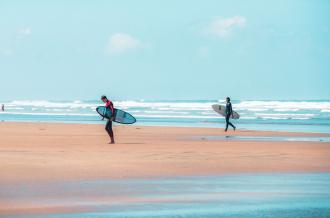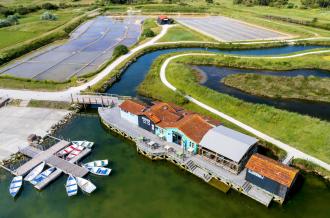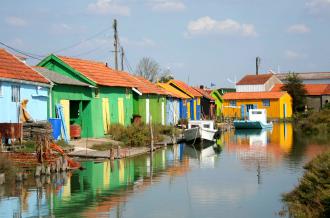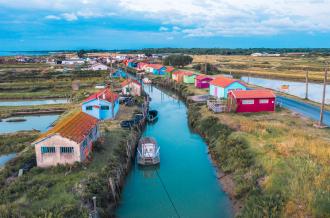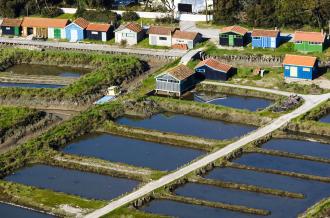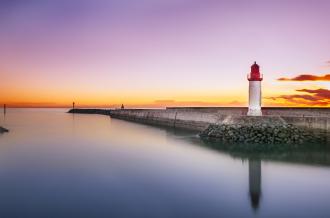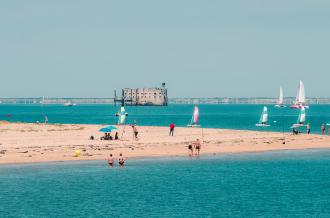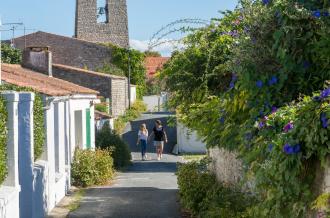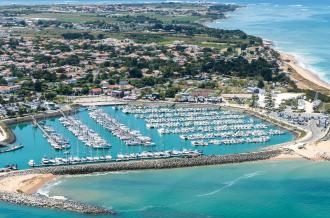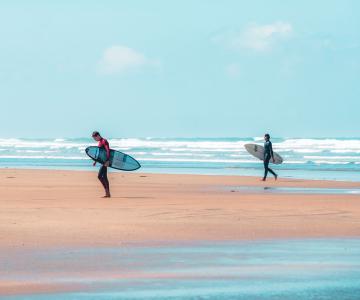
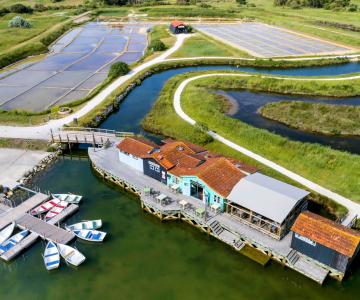
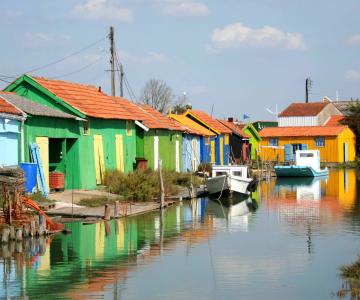
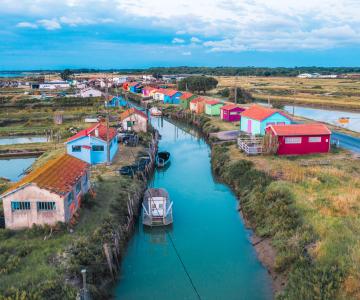
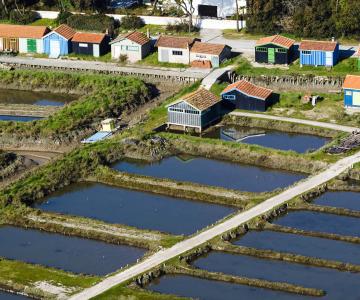
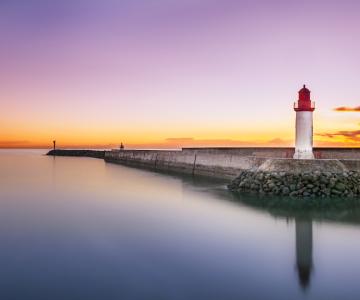
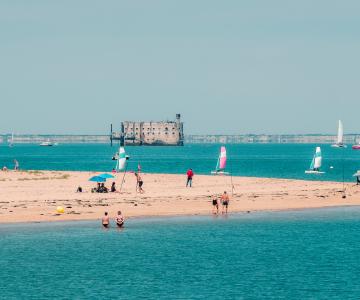
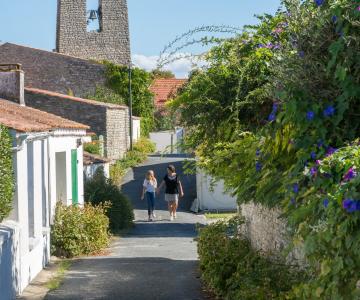
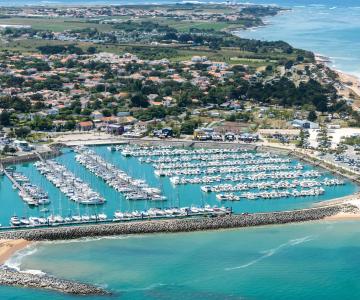
The île d’Oléron
Cross the bridge and you’re on the biggest island off France’s Atlantic coastline, as well as the most southerly. 32 km long and 8 km wide, the ‘island of light’ is famous for its stunning sandy beaches, its breath-taking natural landscapes and its rich heritage. On the menu are walking and cycling trips, boat excursions, sporting activities, exploring new things and places or just relaxing...
There’s lots to see in the eight municipalities on the île d'Oléron: Saint-Trojan-les-Bains, a seaside resort with its own state-owned forest; Le Grand-Village-Plage, a centre for salt production; the Château d'Oléron and its imposing fortress; Dolus d'Oléron and the marais aux oiseaux bird reserve; Saint-Pierre d'Oléron, with its pedestrianized streets and the fishing harbour of La Cotinière; Saint-Georges d’Oléron and small villages such as Chaucre, Domino, Boyardville; the old-world charm of the narrow streets of La Brée les Bains; and lastly, at the northern tip of the island, Saint-Denis d'Oléron, home to the 46 metre-high Chassiron lighthouse.
Head off the beaten track and you’ll soon discover various charming little villages. Wandering down streets bedecked with hollyhock, you’ll be able to enjoy the architectural details of our smaller settlements such as Chaucre, Arceau, La Rémigeasse and others. These traditional villages are characterized by fishermen’s houses with blue and green shutters and white-washed walls.
Oléron is notable for the quality of its light, but it’s also somewhere where colours and contrasts reign supreme. In fact, it’s rare to see such a degree of variety in a relatively small area. In the space of just a few miles, you can go from a seaside resort to an oyster farming hub, from a pine forest to marsh landscapes and even from sandy beaches to rocky foreshores. The defining characteristic of the île d'Oléron is probably its wild appearance. As soon as you leave the more built-up areas, you encounter the natural world in all its glory. In particular, the quasi-Mediterranean climate has given rise to a wide variety of plant-life which you’ll have the pleasure of seeing during your travels.
